Log notes
Contents of log:
- Where am I at in the photography study?
- How the exercises have influenced assignment 5 plus Crewdson’s work
- A word about viewpoint
- Reflection of Burgin’s comment
- Photo sample of previous ‘homage’ to a photographer (philip Lorca di corcia)
- Rinko Kauwachi’s image
- Modes of photography
- Reflections on assignment 5
- The need for context in photography
- Quentin Bajac
- Sontag
- Analysis of my photos and Evaluation of assignment
*NOTE: Analysis of my images for this assignment and evaluation at bottom of page
1.Where am I at in my photography-2 years study with OCA
To date I’ve completed (nearly) two courses over two years. I’m aiming to do the level 1 courses in 10-11 months so as not to slow down too much. For this I need to put in three whole days study a week and its still feel like I could do more.
I have made a reasonably big commitment in my life to photography and the visual arts and now it seems that it will be the case for a very long time. I have gained immensely from my studies with OCA. The approach suits me as opposed to my previous studies of photography at Espai d árt fotografic. The approach of reflection also works well for me as this is something I am used to doing thorough my other studies and through my life. It makes sense. It has been said that there is nothing more self indulgent than art…a solipsistic pursuit rit large!! However, I only sometimes see it like that. Its not all about me! I find that there is a universal message in the best photos and one that conveys strong feelings can really be effective. If photography was simply about my own process, it might not be so interesting in the long run. As it is, it has a profoundly important place in my life as means of expression and communication. Many people in my life know me directly through my photography rather me as a person in person.
In terms of what I have gained it has been immense. I have gained a great deal technically and visually and artistically. However, I still feel along way from my goal. My goal as a photographer is to produce work. Who doesn’t want to be recognised in some way for the work that they do. But its early days. I think that I am realising that my career will not me predominantly commercial by rather artistic. This means a lot of dedication and time on top of an already full life that I have. But I feel determined to make it happen. My weaker areas are those to do with post production work and knowing those tools with more fluency. I plan to do some more study in that area of the coming months. Having said that I have leaned a lot in that arena as well. Curiously there was on that in the foundation course than with EYV.
2.How the exercises have influenced my project in Part 5
I was inspired by the idea that ‘viewpoint’ is a changeable situation and that there are perhaps as many ways to say something with a camera as photographers. My first instinct in this part of the course was to shoot something more documentary; a document of society from my point of view. However, that project will wait for another time. Instead, following the remit that “in the end it is something that you like…” I decided to photograph my own dwelling space ‘Home’.
From Civil imagination (2012) Ariella Azoulay describes how one should be free to explore photos imaginatively. This fits into the idea of context and might also contradict as well. If the remit is purely to “imaginatively explore” then does the context matter? If what we want is to let the imagination roam we are free to explore photos without knowing the context or intention of the artist…
Exercise 5.1 was a curious example of an exercise that could be interpreted in a variety of ways. I took it to be a question of resonance and as the remit said ’empathy’ with the subject. This helped me a bit in thinking laterally although the frustration around trying to portray a closeness to something that is not a person, was indeed frustrating! So the exercise pushed the boundaries a bit but was not particularly enjoyable for me personally. I ended up interpreting the photo for what it represented and analysed it more as a visual document of something in myself that wants expression. As for the interpreting of the things that were not intentionally wanted in the frame I found that harder.
Exercise 5.2 was useful for contextualising more how I respond to images, by having to respond to an image by another image made by myself. I tend to respond to images that have a strong message rather than just strong composition or aesthetics. This is coming out more as I photograph more and study more in this context. It helped me contextualise my photo in the sense of making me think more clearly about it and what it wanted to say. In particular it made me see that one’s response can be different at different times and perhaps on another occasion I might want to respond differently to the theme.
Artistically I felt that exercise gave me room to explore my own imagination as per the photo that I produced for the exercise. This translated to the ‘home’ assignment that I did in being imaginative about how I portray home or the place that I dwell.
Added April 2017 Crewdson’s influence
Crewdson’s image of Ophelia, the darkened tones in the scene and the lighted areas within the scene were one of the main basis for the way I organised the assignment lighting. I have of course developed that somewhat and used few focal points in the frame, less drama in the characters and a much simpler lighting set up. As I looked more at the photo I saw how the use of lighting creates the particular feel of the scene and that without the lighting methods he would not of created the photo with so much success. In particular the lighting (see assignment 4 page) that falls on Ophelia as she lies dead floating in the water. The whole scene dramatically emphasises how the theme (Ophelia) is brought ‘back to life’ through being placed into a new more contemporary scene. The form of spot lighting that Crewdson uses is very sophisticated compared to what I used to shoot my photos for the assignment. However, the idea that I had pre-visualised was to use the lighting to create emotion (sadness, loss, grief) by isolating the characters in an otherwise darkened scene and placing the light on few elements. The difference was obviously that my scene was somewhat non-literal in the sense that you did not see all of the context where the events were taking place, but more a suggestion. This was entirely intentional.
3. A word about viewpoint
The question of viewpoint has been interesting me more and more recently. As I can or am starting to see the relevance of having one’s ‘position’ clear when taking a photo so that’s its relevance can be seen more clearly and specifically. At the same time photos are often left open for interpretation. In documentary photography there is probably a different outcome than for example with staged photography. Staged photography aims to say something about perception and so does documentary photography. The different would be that documentary is more facts or information oriented in the sense of relaying news or some happening in the world that is political or social or economic or otherwise. Staged photos might also have something to say about those things too. Often they are used to make more psychological statements about how we are as humans or can be.
So one’s point of view is informed by all sorts of factors. I think for me as a photographer I’m interested in an area of communication that is somewhat more difficult to get to, which is the metaphysical and the spiritual. I like to take photos that question values and priorities. I like to see photos that raise up big questions such as. ” what is the purpose of our existence”. These sorts of photos are in my experience not easy to come by. Again, in terms of contextualising the image, the “external context” of [1]Barett (2010) is all important. How does one portray an angle or viewpoint on religion or other existential issues? Can these things easily be misinterpreted?
4. Reflection on Burgin’s comment
[2]“The hackneyed idea of ‘influence’ is not at issue here. I am not interested in the questions of what one artist may or may not have taken from another. I am referring to the universally familiar phenomenon of looking at one image and having another image spontaneously come to mind” Burgin (1986).
This quote from Victor burgin expresses aptly and clearly what I felt I was doing in exercise 5.2. After mulling it over for a while I found myself with a spontaneous image in my mind, all of it as a piece suddenly. Then I got to work with creating the scene to take the photo. I find that this happens more and more as I study more deeply and take more images. Probably there is a momentum of development that is underway that allows the creative imaginative side of the mind to come to play. As with anything that you train, it develops under practice according to the laws of cause and effect.
Burgin’s quote struck a cord because in a way it was a simple and powerful way to say that this human tendency can be put to good creative use. Its not stealing or borrowing, it is one’s own creative process activated in dependance of coming into contact with the senses and then the mind processing that to produce an idea, image or concept. It seems to be the way the mind works, through inference and by association.
5. Photo in homage to Philip lorca di Corcia
This photo I made during my foundation year with a remit to ’emulate and favourite photographer. At the time I was very into and taken by di Corcia. I still appreciate very much his work, often emotionally provocative and charged. This is my attempt to give ‘homage’ to his photo of the girl in the restaurant being looked back at by some boys.
Here is one of my photos of a ‘homage’ to Philip lorca di Garcia.
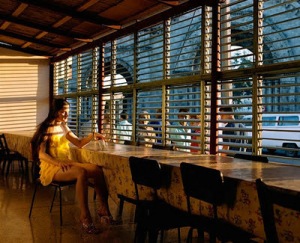
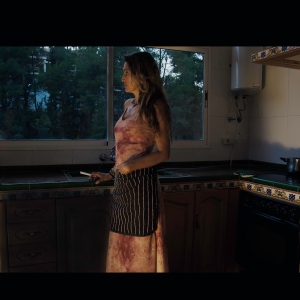
This is staged photo shot by me, explores the typical light setting that Di Corcia would use, although my light source was a lot cheaper and simpler. The photo I made here has more in common with his series ‘heads’.
6. Rinko Kawauchi’s image from book cover
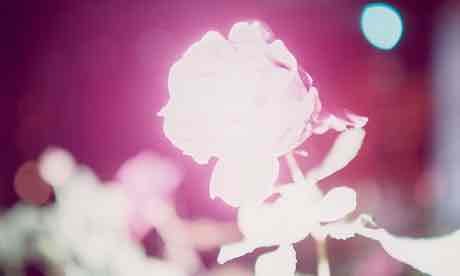
Interesting image, It has something but I’m not sure how to explain it. I suppose the title luminance does say it to a great degree. It talks of intensity and awakened states. The awakening of what I’m not sure as I’ve not read the book. Looking into the heart of the image you get a sense that something is in there and is very hot! Its like looking at the sun. After a while the eyes get tired of such ‘overexposedness’ and start to want to rest.
The counter to the intense white light is the soft coloured background that without which might make the whole image a bit unpalatable. As it is, it softens the light.
8. Reflections on assignment 5
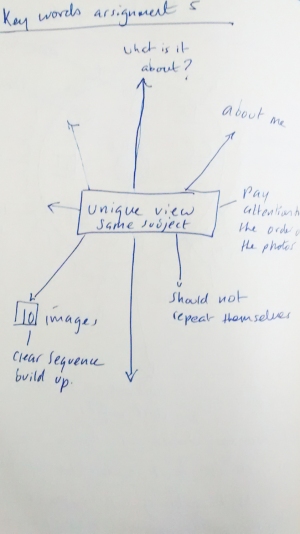
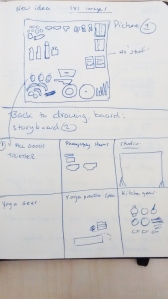
10. Quentin Bajac…’view from the judgment seat’
12. Analysis of my photos-assignment 5
I will analyse these images in groups. Photos 1, 3, 5, 7 and 9 present items in groups. The first photo is a sum total collection more or less of the rest of the things that then get broken into sub-groups after. The only exception are the books which appear as the main feature to the second photo. These images do not have a single focal point. The idea is that the eye is simple led in a random way around the picture to take in all the items in each photo. Separating out the items came to me as an idea through looking at Sophie Calle’s work (references to this found in the research section and the log notes section). Her collection of photos that explore unknown people via their possessions is quite interesting as a sort of outsider’s perspective looking into the lives of others. I have somewhat adapted that, making the pictures more orderly and also obviously choosing what I put in and leave out of the photos. The photos are well arranged in terms of the content and order. Their failing might be that they simply do not stimulate strong holding of attention as there is something repetitive about the sequence although the content differs. I wanted to create this sense of repetition but the reality for me is that it is a little boring to look at.
Photo 2. This image leads the eye to the mirror that is rather too centrally framed now, when I look at it in retrospect. However, I was aiming to compose a certain part of the room without what would of been extraneous stuff, so this is how the composition fell. The device of the man in the mirror, is something that I particularly like. I used this in this way to show the presence of a person (well myself) at least in one photo so as not to make the whole sequence too dry or objective only of facts and things. I had the gaze and direction pointing towards the books to give a sense of connection of this photo to activity of reading or studying which is usually what I do first thing in the morning before getting on with other projects.
Photo 4. Shows the place where I practice yoga. The light effect and somewhat dark tone of the image is intentional(although might seem just underexposed) to create a peaceful feel or atmosphere. I set the room up after much trial and error trying to find an interesting angle to photograph from. I let the light fall onto the main subject, the yoga mat, and decided to find an angled shot to pronounce a little that feature of the room. All the images were shot at 35mm fixed focal length with a mirrorless fujifilm xpro-1.
Photo 6. The kitchen. Again I spent some time looking for an interesting view into the kitchen with a 35mm lens. I chose this image as the select for its balance of left and right side for the frame and bit more depth with the window in the background and the sofa in the foreground. In terms of rule of thirds it also seems better than some of the other images that I took of the kitchen area.
Photo 8. I intentionally left the area (studio) space untidy and looked for the composition within it. I had be working on the other photos of the assignment that morning so just decided to shoot that space as this is often although not always were I work when I am inside photographing. Again I aimed to a balance the frame with the different objects. There are squared, circles and triangles within the picture that make it feel very odd as there is a mix of shapes. However the light is particularly good in this space as I have a skylight above which provides a good even soft light downwards. Its failing might be that there is no one central focal point that engaged the viewer for any length of time. The eye goes to the tripod at first. The light provides a strong visual element in the photo.
Photo 10. I played for hours trying to find a acceptable angle for the bathroom. In the end I chose to home in on the bath. Wether I achieved my aim here I am not certain. In terms of the visuals of the image, there is a leading line towards the ‘products’ of the bathroom. I struggled to be excited by the image as its is so mundane, but there is something useful in this practice of photographing the everyday and putting it into a context like this. The angle of view was chosen to be able to see into the bath rather than just along it, from a further back view with 35mm. I was doing what was possible to capture light that was not flat. The angle of view in some ways is a bit disorientating I feel. It could be of been better to shoot it with a wider lens. However, there were restricting factors in getting into the space and the widest that I have is the 35mm at the moment.
Evaluation of the assingment
I feel that I have taken a creative approach to working with the initial inspiration from Sophie Calle’s work Hotel, room 47 and have explored the theme of personal identity through my daily activities, possessions and places that I do those things. The assignment ‘hangs together’ although there is something that slightly alludes me as to what the photos actually say about myself.
The main thing that I experimented with was angle of view and light in the spaces of the house. I worked only with a 35mm lens as that is the widest that I have. With a wider lens its possible to take more in, but the discipline with the 35mm was a good challenge.
I think that my angles of view are adequate for portraying the spaces of the house. What I was trying to present both with the light and with the camera position is the the feel that the space is lived in and used. In contrast the things are ordered and neat and tidily line up! If I’d of simply photographed the things as a mess or in use only I don’t think that the photo sequence would of made so much sense. What I was trying to say is: ” Here are the things that I use, and look, these are the spaces.” I doubt that If I’d of done it in a more Calle fashion, that I would of been able to do justice to all of the things that I use for each of the activities. In the end it was a question of ordering and organising the frame.
The idea that I had was to show most of the possessions that I use on a daily/weekly basis and then break them down into sub categories and associate them with the places that I use them. It might seem a little clinical in the way that I have presented them, and in some sense this is intentional. The way that Calle presents her photos is more messy and as it’s happening in the moment. I did not set the spaces up especially, where I did the different activities, only the things that I used for doing them. I think that the photos work as a whole (sequence) to portray the meaning of that I want to communicate but the individual images are not the best I have ever taken. They seem a little routine and almost more about information than anything else. Whilst I waited and worked with light conditions in the house at certain times of the day, to give an sense of mood in those spaces, somehow they do not feel as strong as I would of like them to have done. If I re-shot I use use more details of the home, that are in use, rather than simply the things and the places. This might improve the engagement of the photos.
As a sequence my idea was to tac back and forth from place to items used in the place. The sequence follows the routine that I follow in my day. Whilst the sequence itself would not work without this explanation I feel that it does adequately portray something of my life. However, I am still left with a feeling of the impersonal and would liked to have made the photos feel more intimate. Calle, in her various shots of hotel rooms chooses what seem like rather random angles of view. I have ordered my angle of view from above so that a number of items can be seen together in a kind of map fashion. Whilst I contemplated a different angle of view initially, for each of the objects, on reflection it seemed better to go with a pattern as this feels to me like it has more visual acceptability.
- Barett T. (2010) http://www.terrybarrettosu.com/pdfs/B_PhotAndCont_97.pdf [accessed April 2017]
- Burgin V. (1986) http://www.tate.org.uk/research/publications/tate-papers/03/the-separateness-of-things-victor-burgin [accessed April 2017]
- Image 2. di Corcia P. (date unknown)
- 2. Image 3. kawauchi R. Iluminance (2009) https://www.theguardian.com/artanddesign/2011/dec/07/deutsche-borse-prize-photography-2012 [accessed March 2017]
- Bajac Q. view from the judgment seat (2013) http://aperture.org/blog/view-judgment-seat-quentin-bajac-conversation-philip-gefter/ [accessed march 2017]
- Sontag S. On photography (1977) Penguin modern classics
